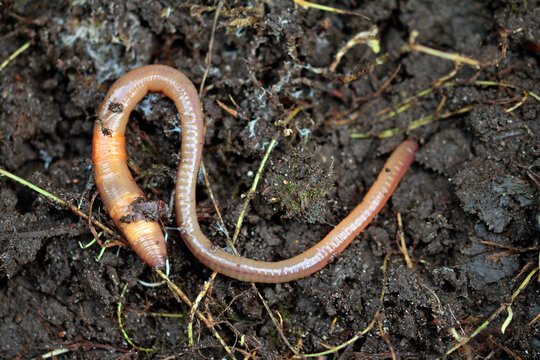
Let’s dig into the lifecycle of a common earthworm, because understanding it can help us appreciate these little guys even more. They’re not just wriggly things you find in the dirt—they’re fascinating organisms with a life story worth telling. Get comfy, and let’s explore their life stages, roles, and what makes them such important players in our environment.
What Makes Earthworms Special?
Before we dive into the lifecycle, let’s take a moment to appreciate what makes earthworms unique. These soft-bodied invertebrates belong to the phylum Annelida and are often characterized by their long, segmented bodies. One of the most interesting things about earthworms is their ability to aerate and enrich the soil as they burrow.
You might be wondering, how do they do this? Here’s the thing: as they move through the earth, they consume organic matter and excrete nutrient-rich castings, which enhance soil fertility. They also help with drainage and root health, playing a vital role in supporting plant life. So, if you’re into gardening or simply enjoy a healthy ecosystem, earthworms are your friends!
The Stages of An Earthworm’s Lifecycle
Earthworms go through several stages during their lifecycle: from egg to juvenile to full-grown adult. Each stage is essential for the species’ survival and the overall health of the environment.
1. The Egg Stage
The lifecycle of an earthworm begins when a mature earthworm lays its eggs. But wait, how does that happen? Earthworms are *hermaphrodites*, meaning each one has both male and female reproductive organs. When two earthworms mate, they exchange sperm, which the eggs will later use. The eggs are laid in a protective cocoon made of mucus in the soil.
Typically, each cocoon can contain anywhere from 2 to 20 eggs, depending on the species. After a few weeks, if conditions are right (think moist soil and warm temperatures), the eggs hatch, and the tiny earthworms emerge. It’s kind of like a little surprise party beneath the surface!
2. The Juvenile Stage
Once they hatch, these baby earthworms are called *juveniles*. At this stage, they resemble small adults but are generally much smaller and lighter in color. They start to feed on organic matter in the soil, which helps them grow stronger.
During this time, they’re developing their skills, learning how to burrow, and enhancing their ability to digest organic material. Here’s a fun fact: juveniles live off the nutrients in the soil during their early development, which is crucial for their growth into adulthood.
3. The Adult Stage
After spending about 6 to 12 weeks as juveniles, earthworms reach adulthood. They’re now ready to start reproducing themselves! Adult earthworms are typically around 3 to 10 inches long, depending on the species. They’ve become skillful burrowers and are more effective at aerating the soil.
With the addition of clitellum, a thicker band around their bodies, they are fully equipped for reproduction. The clitellum produces a cocoon for laying eggs, which means the cycle continues. It’s a beautiful, cyclical journey that contributes significantly to our ecosystems.
Factors Affecting Earthworm Lifespan
Not all earthworms live the same length of time, and several factors can influence their lifespan. Generally, earthworms can live between 4 to 8 years in ideal conditions, but several elements can come into play.
1. Environmental Conditions
Earthworms thrive in moist, well-oxygenated soil. If the soil becomes too dry or too compacted, they may struggle to survive. Heavy rainfall can be beneficial, but it can also lead to flooding that washes them away.
Proper temperature is another factor; they prefer a steady temperature between 50°F and 70°F. Extreme conditions can stunt their growth or even lead to death.
2. Food Availability
Earthworms eat organic matter, including decaying leaves and plant material. If there’s not enough food, they can face difficulties in growing and reproducing. You might notice fewer earthworms in gardens or fields that don’t have a rich source of organic matter.
Maintaining a healthy compost pile or ensuring your garden is rich in organic material can help encourage a thriving earthworm population.
Earthworms and Their Role in the Ecosystem
Earthworms might be small, but their impact is enormous. They play several critical roles in maintaining the health of ecosystems:
1. Soil Aeration
As earthworms burrow through the soil, they create channels that allow air and water to penetrate deeper. This process is essential for root development in plants. A well-aerated soil encourages healthy plant growth because roots need access to air and water to thrive.
2. Nutrient Cycling
Earthworms help break down organic matter into nutrients that plants can use. Their castings are rich in nitrogen, phosphorus, and potassium, which are essential for plant health. This natural fertilizer reduces the need for chemical fertilizers!
3. Biodiversity Support
By improving soil health, earthworms also encourage a diverse range of plants and animals within an ecosystem. Healthy ecosystems tend to support various species, which is crucial for maintaining balance and resilience in nature.
In Conclusion
The lifecycle of a common earthworm is more than just a simple life story; it’s a testament to their importance in our environment. From a humble egg to a vital component of the ecosystem, earthworms play an incredible role in enriching the soil, supporting plant growth, and maintaining ecological balance.
So, the next time you see one of these little wrigglers in the garden, remember that they’re not just there by chance. They are the unsung heroes of the soil, making the world around us a healthier place—one burrow at a time. Let’s give a wave to the earthworms for the essential work they do!
